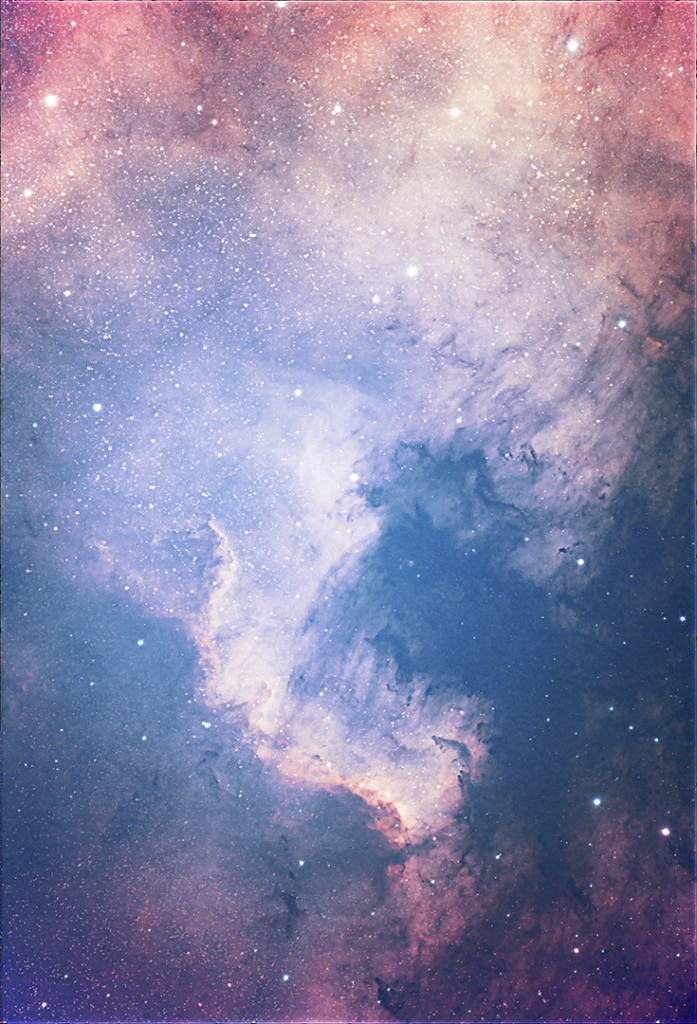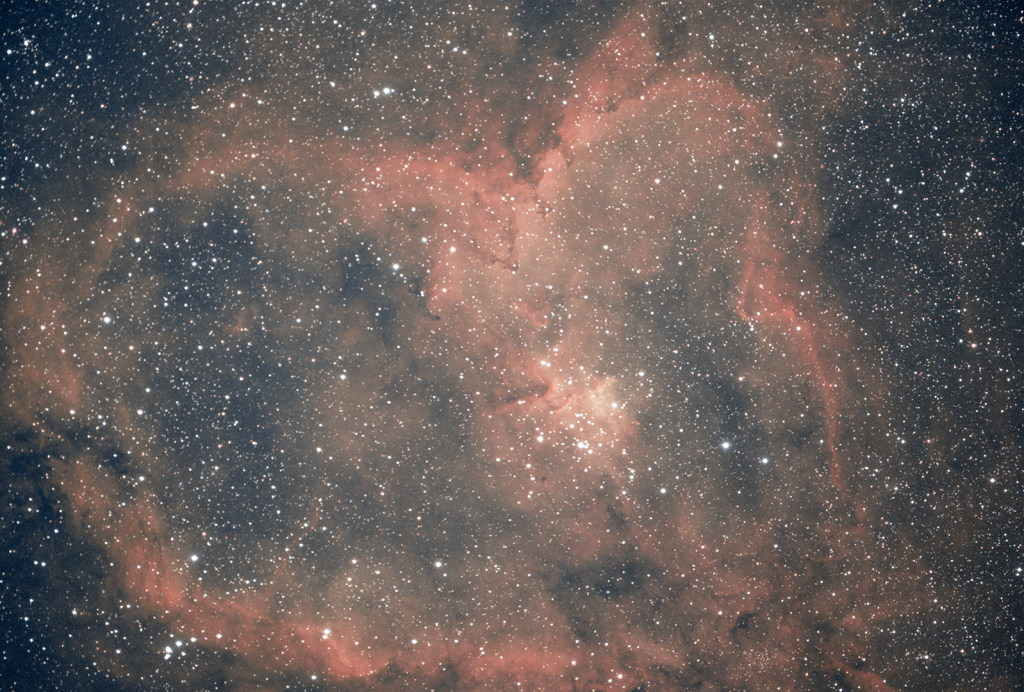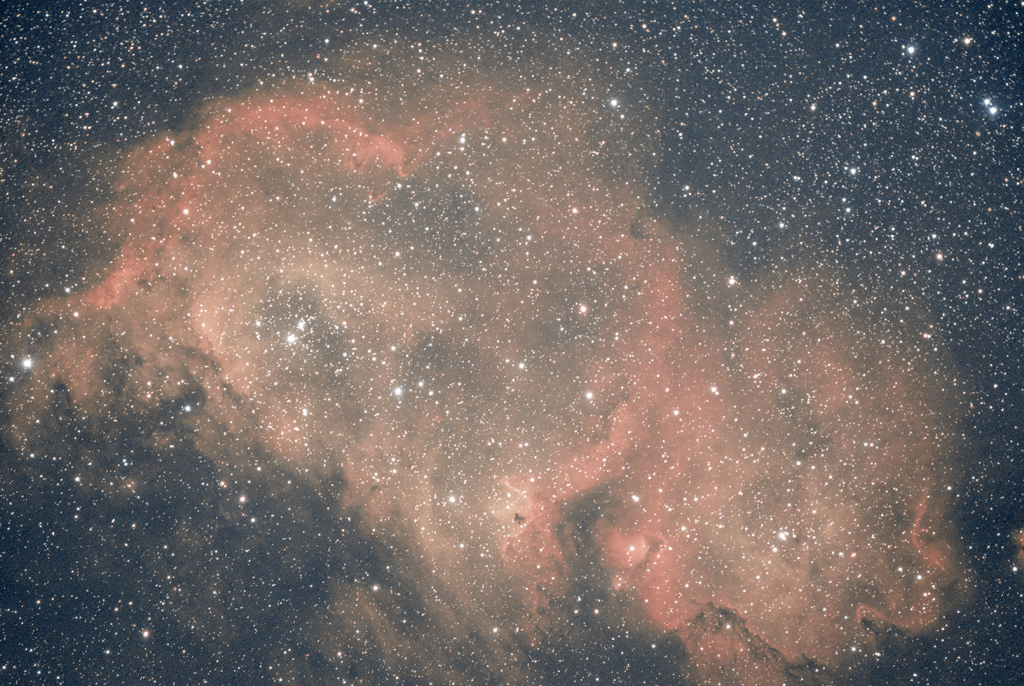I’ve reworked this image a bit. I watched a video and got some ideas. I split the three channels out and processed each individually before recombining. The capture was with an L-eNhance filter that lets in Ha, OIII, and Hb. The Ha is red of course, the OIII is kind of green and Hb is kind of blue so I pretended it was a clear cut split for the three colors and frequencies. Anyway, once split I did one automatic levels stretch on each and one manual curves on each. Then on green and blue I did a brightness/contrast layer (two for the blue I think) to try to get them close to the contrast level seen in the red without the extra work. Then recombine, crop, and dust enhance and star size reduction actions. Although the colors are not “real”, I like the results.




